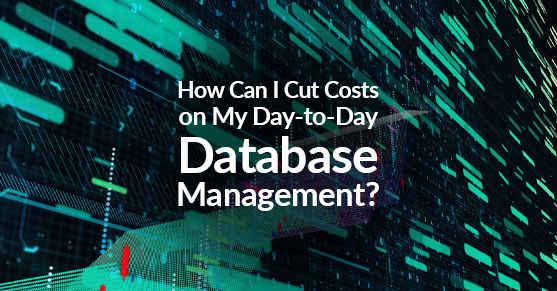As a data management company, we understand the importance of cost savings in day-to-day database management for your company. Our goal is to help you identify areas within your database management workflow that can be streamlined and automated, leading to cost savings while improving overall efficiency. In this guide, we will provide specific cost-saving strategies, such as migrating to cloud-based database solutions, optimizing database queries, and consolidating duplicate data. Additionally, we will outline ways to reduce the need for manual data entry and utilize data visualization tools. Finally, we will explain the importance of regular maintenance and monitoring of the database to avoid costly data breaches and errors.
Assessing and Identifying Areas for Streamlining
The first step in reducing costs in day-to-day database management is to assess and identify areas that can be streamlined and automated. Some of the areas that can be automated include backups, monitoring, and maintenance tasks. By automating routine tasks, you can save time and reduce the need for manual intervention, leading to cost savings.
Cost-Saving Strategies
- Migrate to Cloud-Based Database Solutions: Cloud-based solutions offer pay-as-you-go pricing models, eliminating the need for expensive hardware and software investments. Additionally, cloud-based solutions can provide scalability, flexibility, and security.
- Optimize Database Queries: Optimizing database queries can improve database performance, leading to cost savings by reducing the need for additional hardware or software licenses.
- Consolidate Duplicate Data: Consolidating duplicate data can help reduce hardware and software licensing costs by eliminating redundant systems and streamlining management.
- Reduce the Need for Manual Data Entry: Reducing the need for manual data entry can significantly reduce labor costs and improve accuracy. This can be achieved through automation and process improvement.
- Utilize Data Visualization Tools: Utilizing data visualization tools can help businesses to identify trends and patterns in data quickly. This can lead to improved decision-making and cost savings by reducing the need for additional resources.
Importance of Regular Maintenance and Monitoring
Regular maintenance and monitoring of the database are crucial in avoiding costly data breaches and errors. Maintenance tasks such as backups, updates, and patches ensure that the database is up-to-date and secure. Monitoring tasks such as performance monitoring, resource usage monitoring, and security monitoring can help businesses to identify potential issues before they become a problem.
How Virtual-DBA Can Help
At XTIVIA, we offer a range of services designed to reduce costs in day-to-day database management. Our services include database administration, monitoring, optimization, and migration to cloud-based solutions. By partnering with us, businesses can benefit from our expertise and experience, leading to cost savings and improved efficiency.
Conclusion
Reducing costs in day-to-day database management requires an assessment and identification of areas that can be streamlined and automated. Cost-saving strategies such as migrating to cloud-based solutions, optimizing database queries, and consolidating duplicate data can lead to significant cost savings. Additionally, reducing the need for manual data entry and utilizing data visualization tools can improve accuracy and efficiency. Finally, regular maintenance and monitoring of the database are crucial in avoiding costly data breaches and errors. At XTIVIA, we offer services designed to reduce costs and improve efficiency, leading to increased profitability for businesses.
Contact us today for more information or any questions you have!

